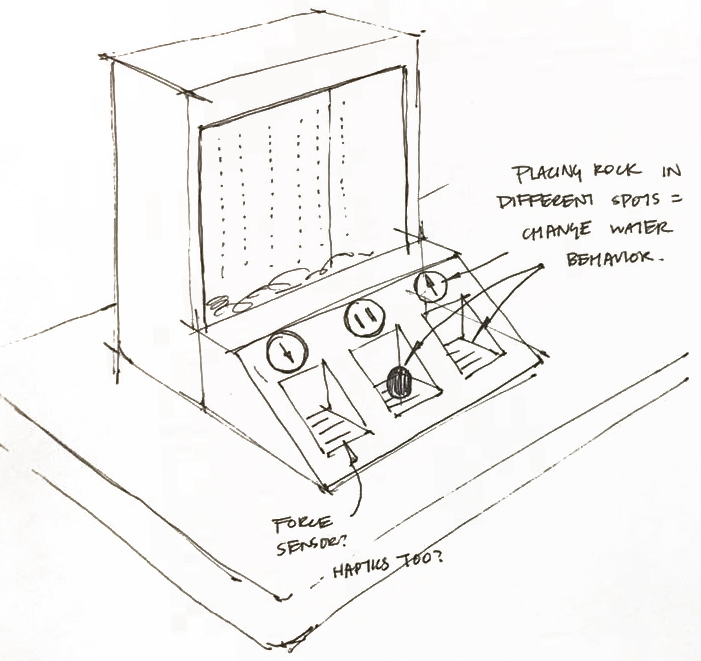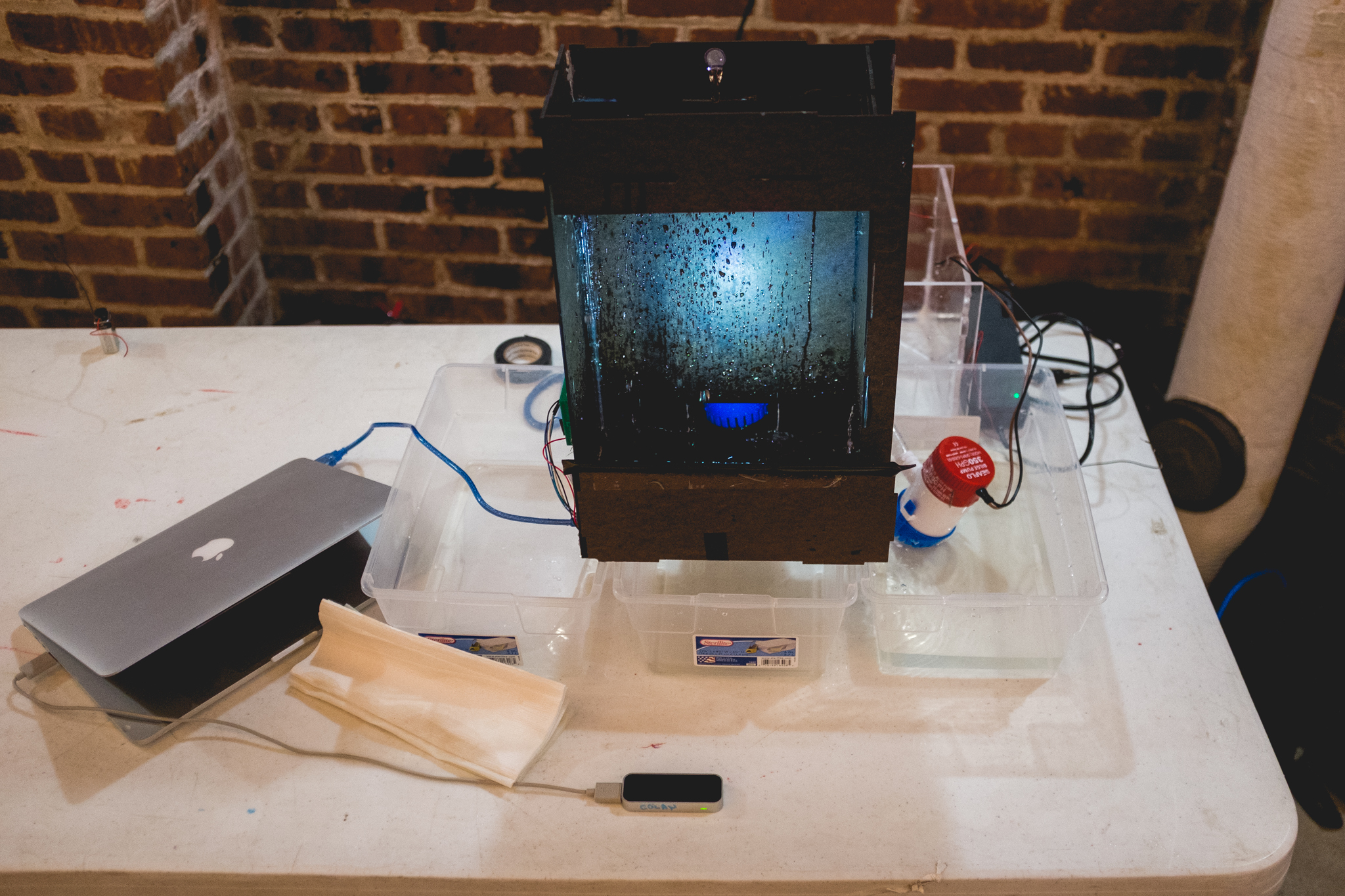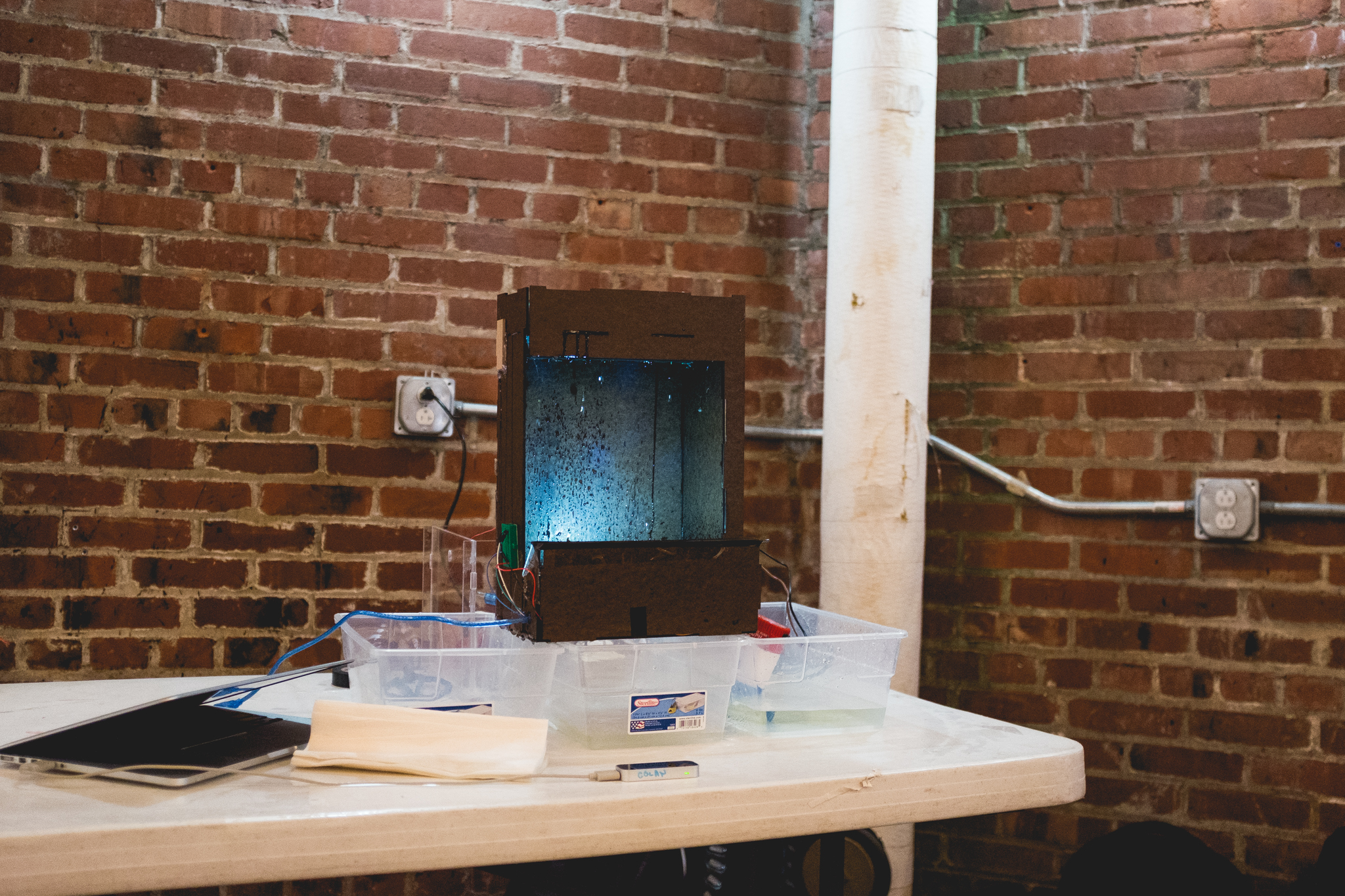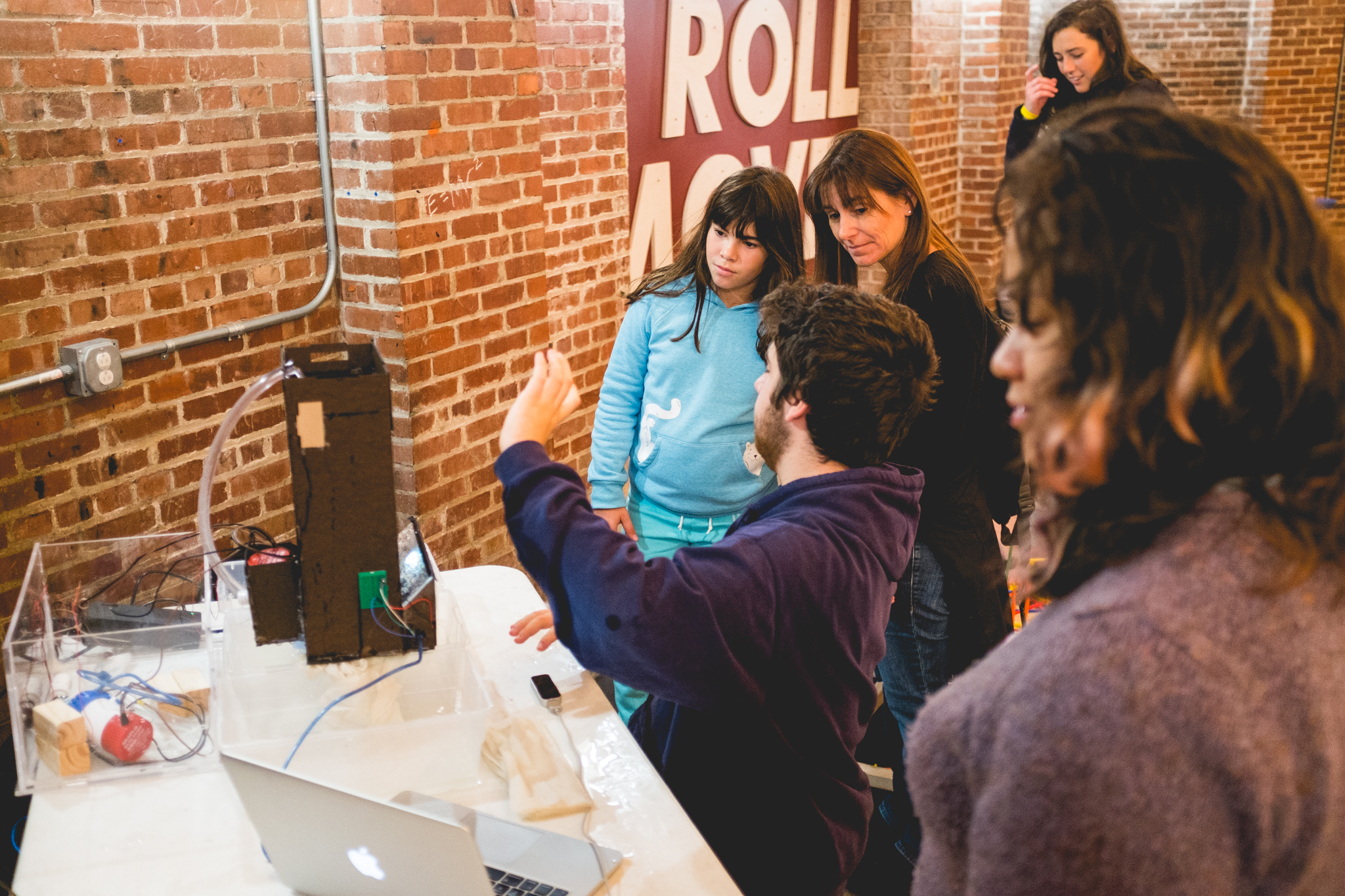Analysis —
What technical limitations did you discover during the visit?
Our latest prototype had some issues while being built, and thus our demo at the Children’s Museum was an incomplete model. For the past three iterations, we attempted to devise a clever combination of water pressure and hole size to create several steady streams of water droplets falling at a constant rate. Unfortunately, there were too many barriers and we were not able to get a perfect result. At the museum, we decided that we would have to find an alternate solution to the constant drip rate.
We also discovered that the waterproofing aspect was a tougher challenge than we had anticipated—having electronics in the bottom layer means that there should be zero leaks, and that means the material has to be waterproof as well.
Another problem we discovered was lighting. Even though we tried to be in a dark environment, the light was still not powerful enough to light the stream well enough.
Lastly, we discovered that it was difficult to hide the electronics because many of our wires were too short. This should be easy to fix with several usb extension cables.
In what ways did children and adults find a moment of delight in your project?
Although not many children stopped by our project, we did find that many of the children were intrigued by the stroboscopic effect, although it may have been incomplete.
The moment of switch between the regular stream and the strobed stream was that of wonder. Seeing the nature of the water change in itself seemed to be interesting to them.
What aspects of the observed interactions were surprising to you?
Much more than placing their hands over the leap motion, the children seemed far more interested in touching the water dripping itself. I can imagine that they were drawn more towards the tactility of the water than the control over the effect. I’m not sure why this is, but I imagine that it is because of the mildness of the state change itself.
What are additional or different interaction features which would help visitors perceive more of the delight, magic, function, or purpose?
There are many ideas here. Since the children seemed more interested in touching the water, my partner and I are considering putting the control interaction together with the water apparatus, instead of separate from it. We also are planning to take a different approach than the Leap Motion. Although it worked perfectly, there was no tangibility to it yet.
We are considering placing some sort of control system at the base of the apparatus, where placing an object in different buckets would influence the direction of the water.
In terms of magic, we wanted to incorporate more graphical elements into the display. by having certain ambient light that responds to the control switch, we could have some further interest and magic in the project.
Ultimately, the greatest magic and wonder will come once the drip can sync with the strobe.
How does this visit change your vision of the fully realized project?
Though the Leap Motion side of the project did not seem like a difficult part to implement, it will no longer be a part of our project, and the control system will be integrated to the body itself. This will mean new software, and new physical component.
Summary video clip and supporting photos.
Revision Plan —
What will it take to resolve known technical limitations?
To solve our dripping system, we are going to drive our drips not with gravity and water pressure, but rather with the pump itself. We are looking into hydroponic systems to understand how we can do this.
Waterproofing should be reasonable to achieve as long as we are able to design parts carefully. There doesn’t seem to be any more specific methods than that.
For the lights, we bought two LED panels that should run much brighter than before, and we are going to be placing our apparatus in an even darker environment. These LEDs run on 12V, which might be a challenge to power and time correctly.
How does the fundamental experience need to be modified?
The water control experience will shift from an intangible Leap Motion to the tangible placement switch. Also, the controls will be controlling the water state as well as the ambient lighting.
The default state with nobody around will just be the state of wherever the rock is placed, but I think we will want to keep the rock at the center, where the water is paused.
What new capability will you add beyond the initial objectives?
There doesn’t seem to be any specific new capabilities—the effect itself will remain constant. The only new things is that the manipulation and the touching can happen at the same place and time, whereas before the control happened in one spot away from the water streams themselves.




Leave a Reply
You must be logged in to post a comment.